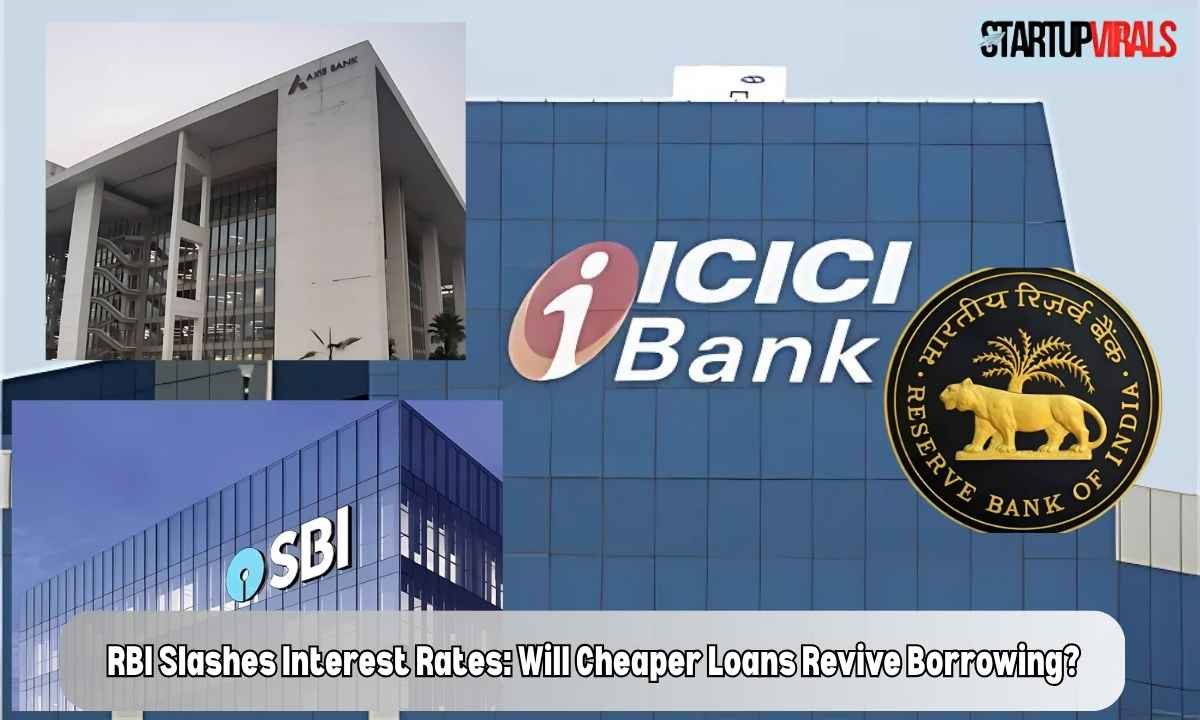The Reserve Bank of India (RBI) has made a significant change to boost the Indian economy. This step is crucial for people to trust the Indian banking system and encourages them to take more loans. They have cut their key interest rate, the repo rate, by 50 basis points to 5.5%. This attempt is the third consecutive one to increase the borrowing rate and aim to make loans more affordable. This will make it easy for businesses and people to borrow money at low interest rates. With all this, a bigger question arises: With lower rates, who will step forward to borrow?
What did the RBI announce?
The Monetary Policy Committee (MPC) of the RBI made the following decisions at its most recent policy meeting:
- Reduce the repo rate to 5.5% by 50 basis points (0.5%).
- Banks can lend ₹2.5 lakh crore if the cash reserve ratio (CRR) is lowered by 100 basis points to 3%.
- Switch from a “accommodative” to a “neutral” policy posture to indicate a balanced approach to promoting growth and reining in inflation.
These actions are primarily motivated by the fact that inflation in April fell to 3.2%, much below the RBI’s 4% target. The RBI sees an opportunity to boost economic growth by lowering borrowing costs now that prices are steady.
What Does a Rate Cut Mean for You?
Whenever the Reserve Bank of India lowers the repo rate, it makes it easier for the banks to lend money from the RBI at a cheaper rate. In turn, banks will automatically lower their interest rates for many loans, like home loans, business loans, car loans, etc. Which means:
- Savers: Returns for retirees and savers may decrease if interest rates on savings accounts and fixed deposits decline.
- Borrowers: Your monthly instalments (EMIs) on both new and existing loans may decrease, which would make it more affordable to finance a business venture, purchase a home, or buy a car.
- Companies: Lower interest rates should make it simpler for businesses to take out loans for growth, which could result in more jobs and economic activity.
Why is the RBI Cutting Rates Now?
The decision made by the RBI to cut the interest rates this year is because it aims at keeping inflation under control while supporting economic growth. Inflation was at its lowest in the year 2019, and the economy grew rapidly. The bank wants to focus on investment and spending. Their major aim is to grow India’s GDP. The RBI claims that its policy of declining the repo rate is related to boosting the demand and business activity.
The Big Question: Who will Borrow?
Some experts are questioning whether people and businesses are prepared to take on extra debt, even with cheaper loans. Here’s the reason behind the resistance:
1. Low Business Demand
In the wake of recent economic shocks, many businesses remain cautious. Because they are uncertain about the demand for their products in the future, some are delaying new investments. Businesses might not take out more loans, even with reduced interest rates, if they don’t perceive prospects to expand.
2. Slowing Household Borrowing
Many households are restricting their expenditures even if home and auto loans are now less expensive. Not everyone is in a rush to take out new loans, even if the EMIs are reduced, because of high real estate prices and concerns about job stability.
3. Banks Are Also Watchful
The CRR cut has given banks more money to lend, but they are being selective about who they lend to. Banks are not lowering their criteria simply because interest rates are declining, because they want to ensure that applicants can repay after experiencing poor loans.
4. The Savers Feel the Pressure
Reduced deposit rates result in lower returns for depositors, particularly those who are retired. Their spending may decline as a result, which might reduce the economic benefits of rate decreases.
What could change the Picture?
To change the whole scenario, there are a few things that must be taken care of if one wants the rate cuts to truly boost borrowing:
- Business Optimism: Before making investments in new factories, stores, or machinery, companies must observe definite indications of increasing demand.
- Increased Consumer Confidence: People are more inclined to take out loans for homes, vehicles, or schooling if they feel more confident about their employment and incomes.
- Bank Willingness: Banks must strike a balance between exercising prudence and making loans, particularly to start-ups and small enterprises.
What Happens Next?
The RBI’s move has set the stage for cheaper loans and more liquidity in the banking system. Home loan rates at some banks have already dropped below 8% after the announcement, making borrowing more attractive for those who are ready. The central bank will be watching closely to see if lower rates actually lead to more borrowing and spending. If not, the RBI may need to consider other steps to encourage growth.
Conclusion
The Reserve Bank of India decision to slash interest rates is certainly welcome news for borrowers, as it makes loans more affordable and has the potential to stimulate economic activity across various sectors. However, the true effectiveness of this move will depend on the willingness of individuals and businesses to borrow, invest, and spend. Factors such as consumer confidence, business optimism, and job security will play a crucial role in determining whether the lower rates translate into real growth. As banks adjust their lending policies and the market responds, the key question remains: who will take the initiative to borrow and invest in shaping India’s economic future?
You can also Read about:



